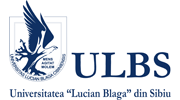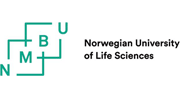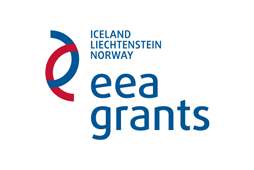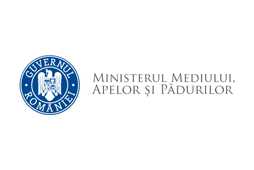Glossary
Perfluorooctane sulfonic acid (PFOS) = substance used to waterproof textiles, carpets and food packaging paper against liquids and fats. Due to the disruptive effect on the endocrine system and its persistency, in 2009 it has been included in Annex B of the Stockholm Convention.
Aldrin = substance used for pest control of soil insects such as termites, corn rootworm, rice weevil, crickets, click-beetles etc. Used for potato and corn protection and wood structures protection against termites.
Alpha-hexachlorocyclohexane (alpha-HCH) = stable HCH isomer forming as a byproduct during the manufacture of the insecticide called lindane (enriched HCH).
Catchment area = area or region from which a river or a lake receives its tributaries (springs, creeks, small rivers, rain and snow melt, ground water). Its surface is determined by the watershed, meaning the highest altitudes of the surrounding relief forms from which rainfall leaks towards different directions.
Beta-hexachlorocyclohexane (beta-HCH) = stable HCH isomer forming as a byproduct during the manufacture of the insecticide called lindane (enriched HCH).
Bioaccumulation = process by which chemical compounds from soil, water and air accumulate in living organisms in much more important quantities than in the environmental factor from which they were taken.
Bioconcentration = synonym for bioaccumulation, a term used primarily to define the concentration of pollutants in aquatic organisms at a higher rate than the concentration of the water, the compound being absorbed in the living organism through a direct mechanism, i.e. breathing through the skin or gills.
Biomagnification = process that occurs when the main source of bioaccumulation is food. It is usually important for those compounds that reach high concentrations in food and very low concentration in the medium with which the body is in contact, such as water for aquatic organisms, air for terrestrial organisms and soil and sediment for bottom feeders and for soil organisms.
Chlordane = broad use organochlorinated insecticide used for various crops such as vegetables, cereals, corn, oil seeds, potatoes, sugar cane, sugar beet, fruit, cotton and jute, especially for root treatment prior to transplant). Widely used to control termites.
Chlordecone = insecticide used in agriculture and horticulture for tobacco, ornamental shrubs, bananas, citrus and domestically used to fight ants and roaches. Its structure and features are similar to those of mirex.
DDT = Dichloro-diphenyl-trichloroethane or DDT is an insecticide which has been used since the '40s as contact poison. Due to its effective action in fighting insects, its low toxicity to mammals and its relatively low production cost, it has been widely used for a long period of time.
Waste = residual material resulting from a technological production process of a certain product, impossible to use as such any further or that cannot be capitalized in the production of that product.
Dicofol = organochlorinated coumpound similar to DDT, carcinogenic and toxic to the nervous system, used to control mites. Banned in Europe.
Dieldrin = organochlorinated insecticide used as an alternative to DDT, highly toxic to animals and humans, banned in 2001 by the Stockholm Convention.
Dioxins = group of chemicals produced unintentionally (by-products) during PVC manufacturing and paper bleaching, during uncontrolled waste, especially plastic, incineration, and a residue of waste incinerators. Exposure to small amounts of dioxin cause chloracne, depression and cancer and exposure to high doses is lethal to humans and animals.
The dirty dozen = the most dangerous 12 POPs according to the Stockholm Convention on Persistent Organic Pollutants from 2001.
Adverse effects = harmful unintentional effects on the organism caused by the administration of a chemical (e.g. medicinal product, pollutant etc.)
Endosulfan = organochlorinated insecticide, one of the most toxic POPs. Used to combat aphids, Colorado potato beetle, cabbage pests. It is toxic to mammals and humans, it attacks the endocrine system, nervous system, affecting reproduction, growth, and facilitating breast cancer occurrence.
Endrin = organochlorinated insecticide used in rodent control. It is deadly to fish, birds and mammals, very toxic to the nervous system, the endocrine system, it causes birth defects. The manufacture and use are banned by the Stockholm Convention since 2001.
Perfluorooctane sulfonyl fluoride (PFOSF) = PFOS derivative. See perfluorooctane sulfonic acid.
Fungicide = chemical used for fighting fungal diseases (i.e. in plants).
GIS map = GIS is the acronym for Geographic Information System. This system is used to create, store, analyze and process information distributed by a software on a map according to the space coordinates attributed to those values. E.g. the GPS system is a Geographic Information System.
Heptabromodiphenylether = brominated organic compound of the HBB group, introduced on the list of dangerous substances banned in 2013 by the Stockholm Convention.
Heptachlor = highly toxic insecticide used to combat termites and other soil insects, to combat malaria, and to protect cotton crops.
Hexabromobiphenyl or HBB = flame retardants (see flame retardant) used in paints and lacquers, production of radio and TV housings, engine housings and polyurethane foam used in car seats. Carcinogen and toxic to the endocrine system, HBB was banned from manufacturing.
Hexabromocyclododecane = brominated organic compound of the HBB group, introduced on the list of dangerous substances banned in 2013 by the Stockholm Convention.
Hexabromodiphenylether = brominated organic compound with 6 bromide atoms, part of the HBB group, introduced on the list of dangerous substances banned in 2013 by the Stockholm Convention.
Hexachlorobenzene (HCB) = organochlorinated substance forbidden by the Stockholm Convention in 2002.
Hexachlorocyclohexane (HCH) = insecticide used to fight lice, introduced on the list of dangerous substances banned in 2013 by the Stockholm Convention.
Hydrocarbons = organic compounds, formed of carbon and hydrogen atoms.
Polycyclic aromatic hydrocarbons (PAH) = also known as polynuclear aromatic hidrocarbons, are hydrocarbons consisting of at least two fused aromatic rings, which do not contain heteroatoms or have substituents. Naphthalene is the simplest PAH example. These substances are found in oils, coal and tars, and are often byproducts of the fuel combustion.
HPLC (High Performance Liquid Chromatography) = efficient method of analysis indicating what substances are present in an organic sample (fruits, vegetables, dairy, meat, etc. ) and in what quantity. For example, one can find out what pesticides and fertilizers are in the food and whether they reach concentrations harmful for human health.
Flame retardant = that delays the fire propagation.
Insecticide = natural or synthetic chemical used in fighting pest and parasite insects.
Food chain = group of organisms that transfers organic matter from one to another: from plants, or primary producers, to the consumer and then to decomposer.
Lindane = insecticide used also as human use pharmaceutical product for fighting lice and mange (gamma-HCH).
Lipophilous = fat soluble substances that absorb in the fatty tissues and in the organic matter in soil and sediment.
Metabolism = all the chemical and biological transformations necessary for life sustaining that substances undergo in a living organism ; exchange of substances. Reactions may be: synthesis, assimilation (accompanied by energy storage), degradation and stored substance release (accompanied by energy release).
Metabolite = organic substance involved or resulting from the chemical reactions taking place in living organisms (see metabolism).
Mirex = insecticide used to combat ants, termites, and wasps in the Americas and South Africa. Also employed as a flame retardant for plastics, tires, and for electrical appliances.
Programme Operator = public or private entity with or without commercial purpose, or an NGO, actively involved in implementing a European or structural funding programme or Norwegian funds programme and that contributes effectively to the programme implementation. In this case, the Ministry of Environment, Forestry and Waters is the Programme Operator for the RO04 Programme -Reduction of Hazardous Substances financed by EEA Grants.
PCB or polychlorobiphenyls = organochlorinated substances used as coolants for electrical transformers and capacitors. They are carcinogenic, lead to fetal mutations, they are toxic to reproduction and to the endocrine system.
Pentabromodyphenylether (pentaBDE) = organobrominated chemical introduced on the POP list in 2013.
Pentachlorbenzene (PeCB) = organochlorinated substance, very toxic for the water environment and toxic for humans.
Pesticide = highly toxic chemical employed in agriculture in order to control pests. According to the targeted type of organism, pesticides can be fungicides (against fungal attacks on crops), insecticides (against pest insects), rodenticides (against rodents), and herbicides (against weeds).
PFOS = see perfluorooctane sulfonic acid.
Policlorbifenili = see PCB.
POP (persistant organic pollutants) = complex organic chemicals with toxic properties, resisting to degradation, bioaccumulating, being transported by wind, water and migratory species across borders and being stored away from their original location. The exposure to persistent organic pollutants (POP) can lead to serious health effects, including certain types of cancer, congenital defects, impaired immune and reproductive systems and a greater susceptibility to disease (according to the Stockholm Convention definition).
Toxaphene = organochlorinated insecticide banned in 2001 by the Stockholm Convention.




